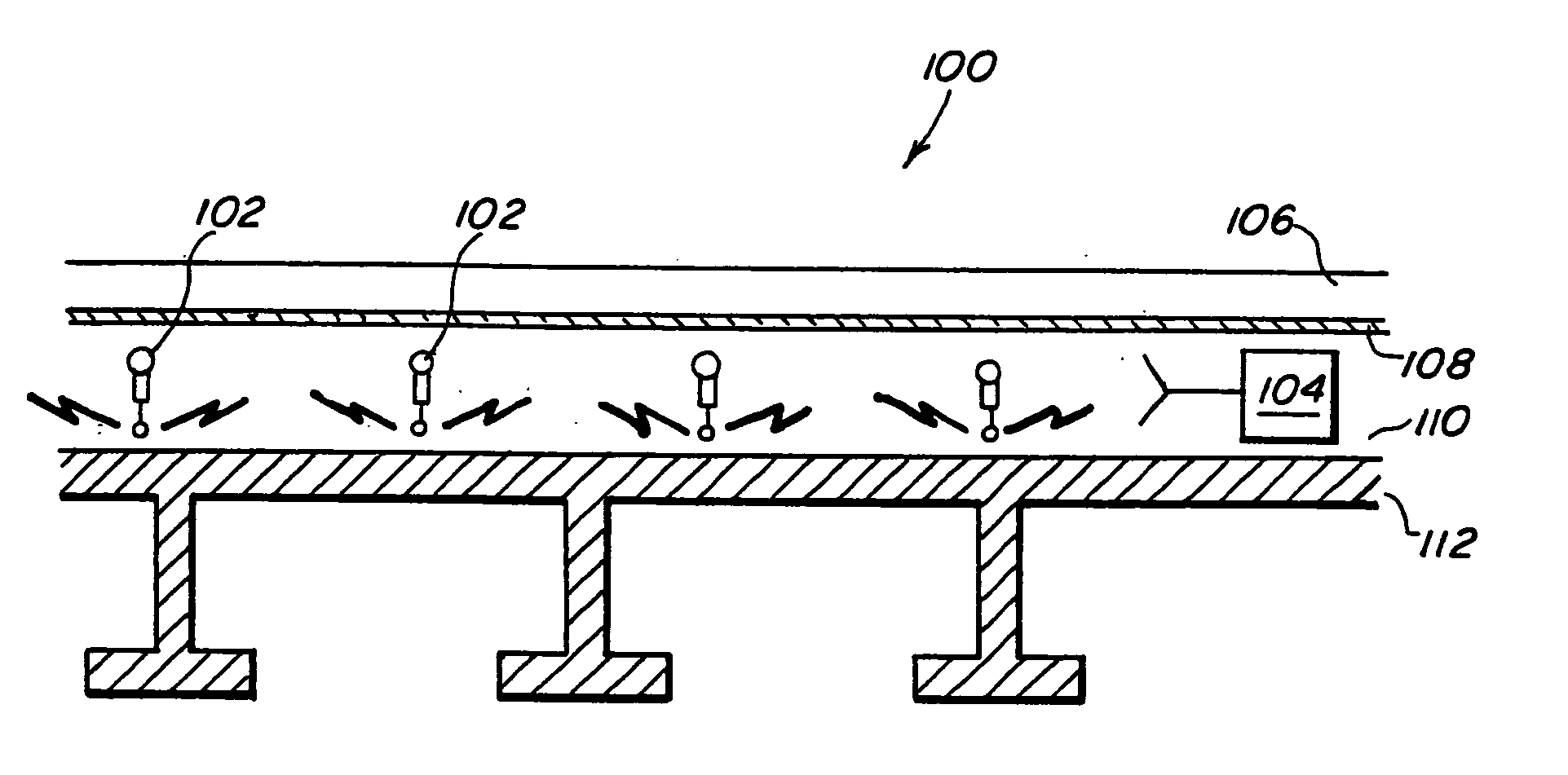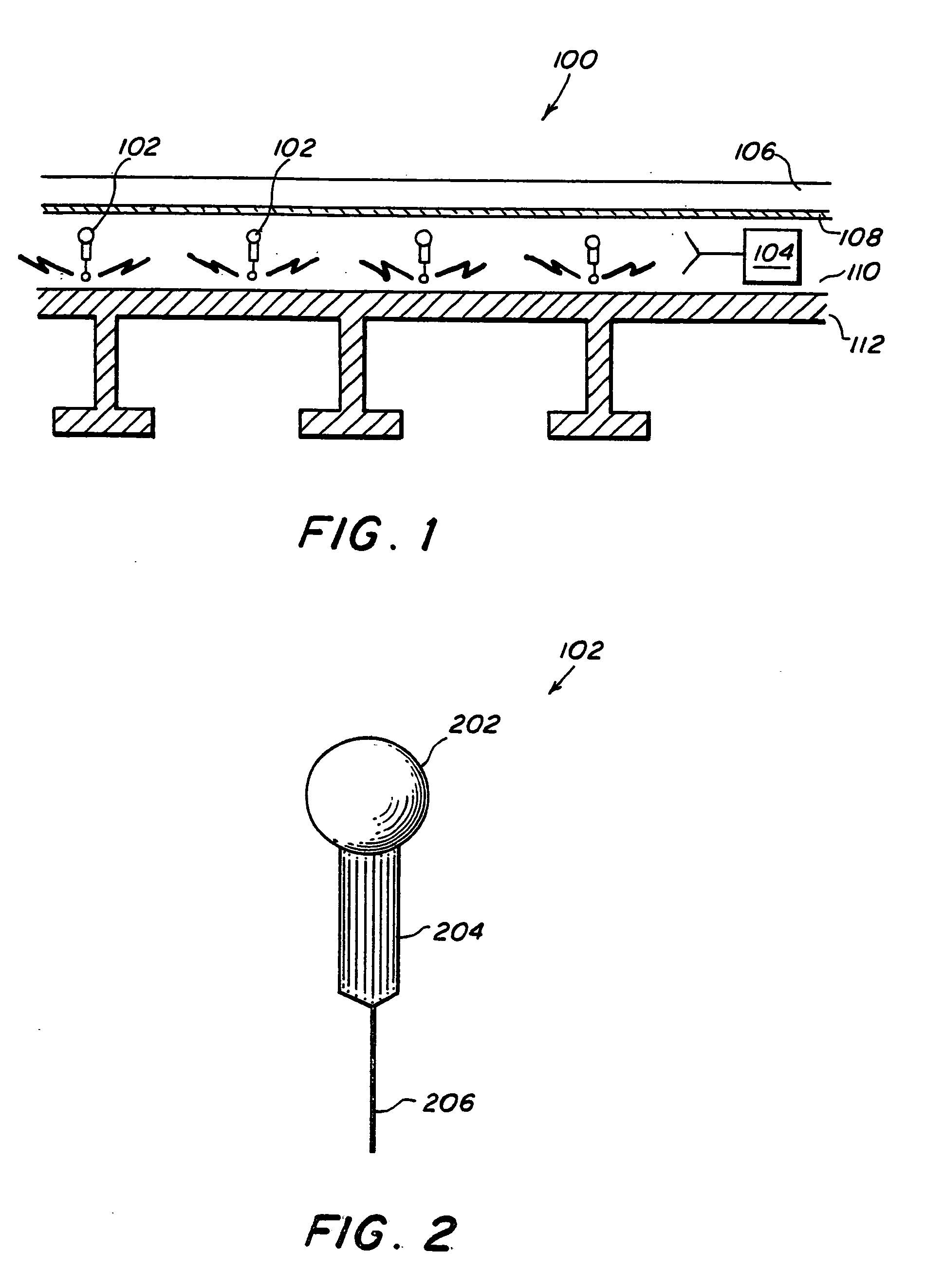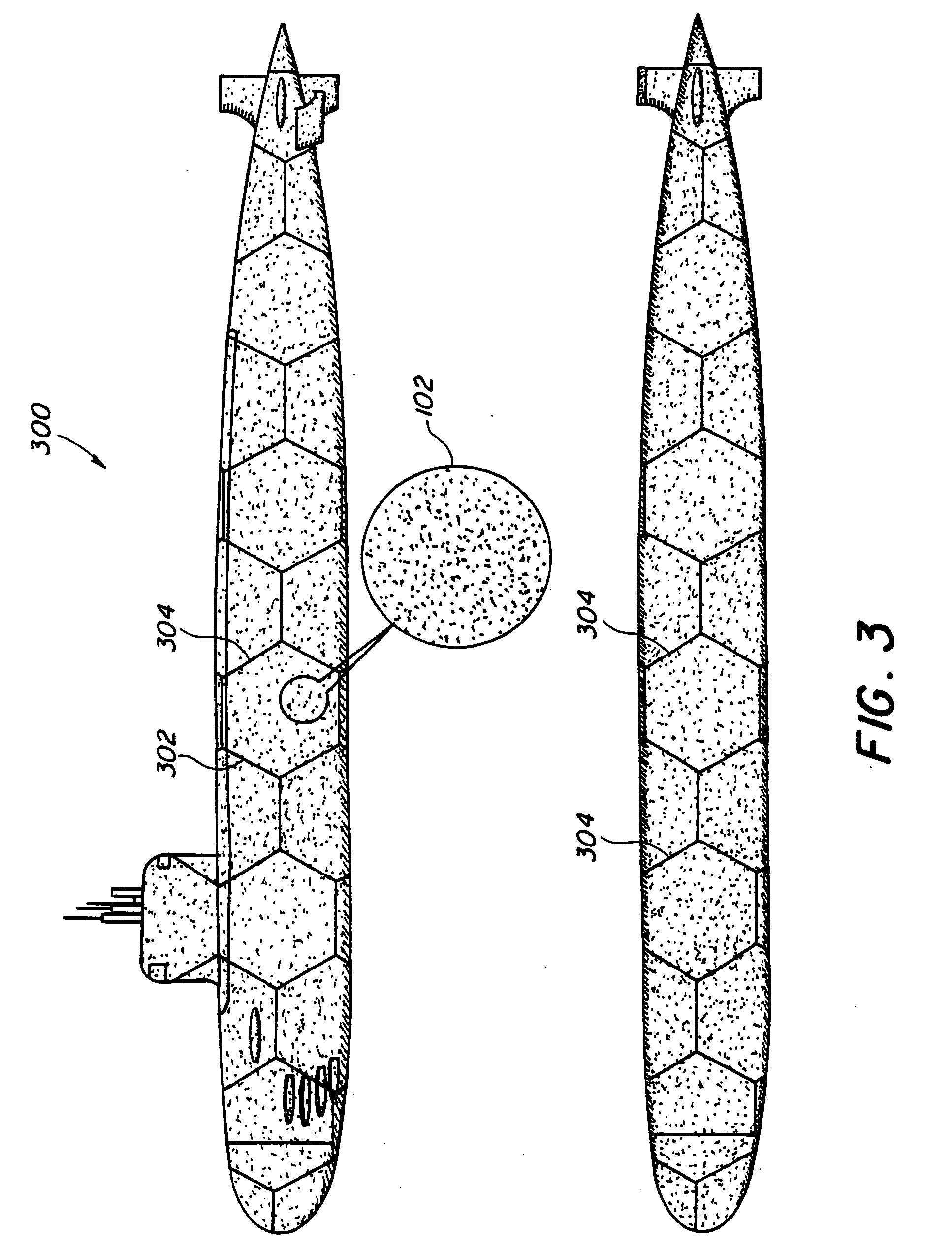Wireless-based system and method for hull-based sensing
a sensor and wireless technology, applied in the field of shipboard sensing, can solve the problems of limited capability to measure and analyze the complexity in-situ, and achieve the effect of high sensor coun
- Summary
- Abstract
- Description
- Claims
- Application Information
AI Technical Summary
Benefits of technology
Problems solved by technology
Method used
Image
Examples
Embodiment Construction
DEFINITION(S): As used herein, when reference is made to a sensor(s) as being disposed within a waveguide or electromagnetic waveguide, this includes the positioning of just some portion of the sensor in the waveguide, e.g. the antenna, while another portion of the sensor, e.g. the body, may be disposed outside the waveguide, as when the antenna is projecting into the waveguide with the base or body portion of the sensor not disposed therein.
In the drawings, like or similar elements are designated with identical reference numerals through the drawings, and the various elements depicted are not necessarily drawntoscale.
Referring now to FIG. 1, there is shown a schematic of a planar waveguide 100 formed on the outer surface of a hull of a vessel in an exemplary embodiment of the present invention. The waveguide 100 comprises an outer dielectric layer 106, an optional (as discussed further below) metal coat layer 108, an inner dielectric layer 110, and the outer surface 112 of a hul...
PUM
 Login to View More
Login to View More Abstract
Description
Claims
Application Information
 Login to View More
Login to View More - R&D
- Intellectual Property
- Life Sciences
- Materials
- Tech Scout
- Unparalleled Data Quality
- Higher Quality Content
- 60% Fewer Hallucinations
Browse by: Latest US Patents, China's latest patents, Technical Efficacy Thesaurus, Application Domain, Technology Topic, Popular Technical Reports.
© 2025 PatSnap. All rights reserved.Legal|Privacy policy|Modern Slavery Act Transparency Statement|Sitemap|About US| Contact US: help@patsnap.com



